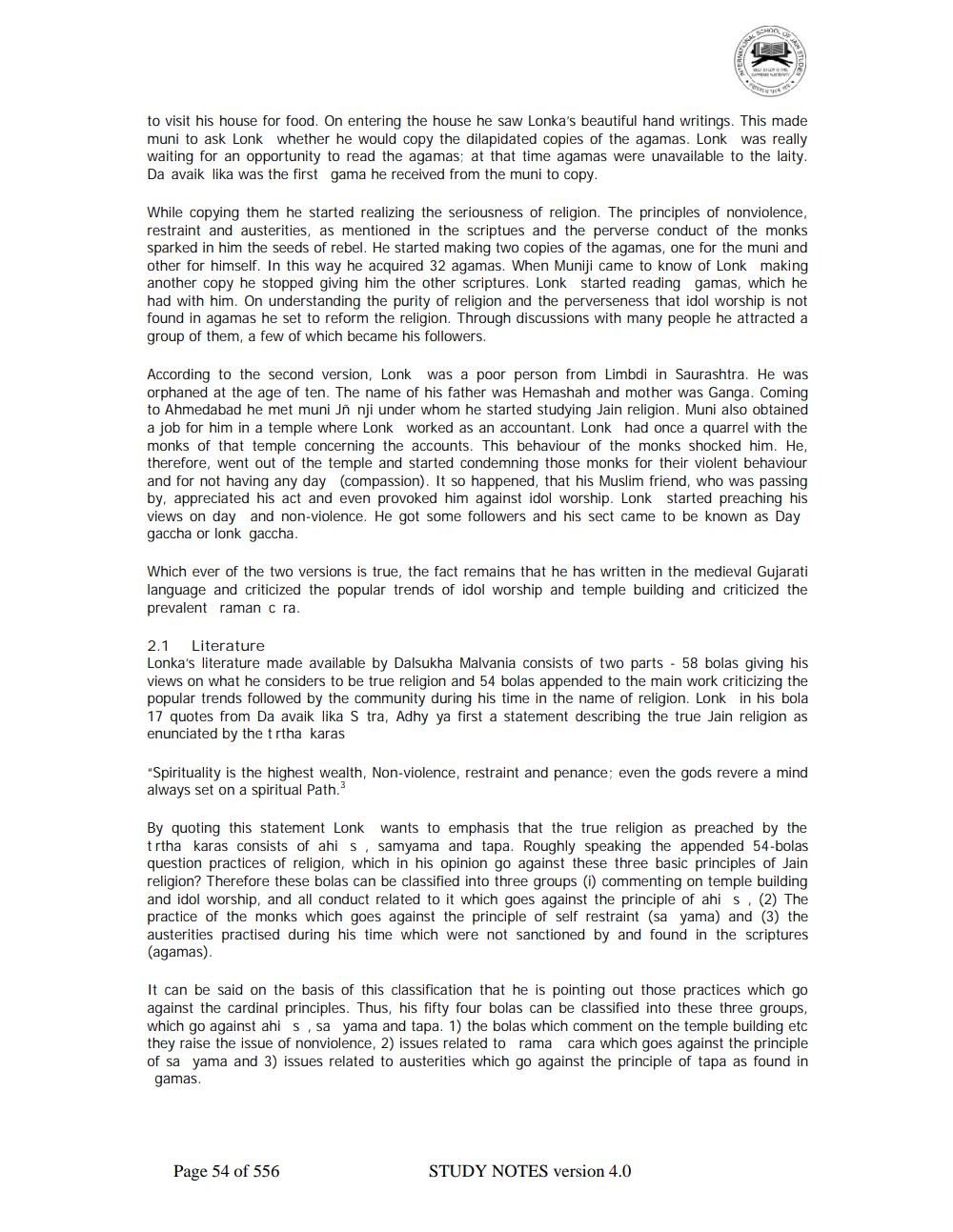________________
to visit his house for food. On entering the house he saw Lonka's beautiful hand writings. This made muni to ask Lonk whether he would copy the dilapidated copies of the agamas. Lonk was really waiting for an opportunity to read the agamas; at that time agamas were unavailable to the laity. Da avaik lika was the first gama he received from the muni to copy.
While copying them he started realizing the seriousness of religion. The principles of nonviolence, restraint and austerities, as mentioned in the scriptues and the perverse conduct of the monks sparked in him the seeds of rebel. He started making two copies of the agamas, one for the muni and other for himself. In this way he acquired 32 agamas. When Muniji came to know of Lonk making another copy he stopped giving him the other scriptures. Lonk started reading gamas, which he had with him. On understanding the purity of religion and the perverseness that idol worship is not found in agamas he set to reform the religion. Through discussions with many people he attracted a group of them, a few of which became his followers.
According to the second version, Lonk was a poor person from Limbdi in Saurashtra. He was orphaned at the age of ten. The name of his father was Hemashah and mother was Ganga. Coming to Ahmedabad he met muni Jñ nji under whom he started studying Jain religion. Muni also obtained a job for him in a temple where Lonk worked as an accountant. Lonk had once a quarrel with the monks of that temple concerning the accounts. This behaviour of the monks shocked him. He, therefore, went out of the temple and started condemning those monks for their violent behaviour and for not having any day (compassion). It so happened, that his Muslim friend, who was passing by, appreciated his act and even provoked him against idol worship. Lonk started preaching his views on day and non-violence. He got some followers and his sect came to be known as Day gaccha or lonk gaccha.
Which ever of the two versions is true, the fact remains that he has written in the medieval Gujarati language and criticized the popular trends of idol worship and temple building and criticized the prevalent raman c ra.
2.1 Literature
Lonka's literature made available by Dalsukha Malvania consists of two parts - 58 bolas giving his views on what he considers to be true religion and 54 bolas appended to the main work criticizing the popular trends followed by the community during his time in the name of religion. Lonk in his bola 17 quotes from Da avaik lika S tra, Adhy ya first a statement describing the true Jain religion as enunciated by the trtha karas
"Spirituality is the highest wealth, Non-violence, restraint and penance; even the gods revere a mind always set on a spiritual Path.3
By quoting this statement Lonk wants to emphasis that the true religion as preached by the trtha karas consists of ahi s, samyama and tapa. Roughly speaking the appended 54-bolas question practices of religion, which in his opinion go against these three basic principles of Jain religion? Therefore these bolas can be classified into three groups (i) commenting on temple building and idol worship, and all conduct related to it which goes against the principle of ahi s, (2) The practice of the monks which goes against the principle of self restraint (sa yama) and (3) the austerities practised during his time which were not sanctioned by and found in the scriptures (agamas).
It can be said on the basis of this classification that he is pointing out those practices which go against the cardinal principles. Thus, his fifty four bolas can be classified into these three groups, which go against ahi s, sa yama and tapa. 1) the bolas which comment on the temple building etc they raise the issue of nonviolence, 2) issues related to rama cara which goes against the principle of sa yama and 3) issues related to austerities which go against the principle of tapa as found in gamas.
Page 54 of 556
STUDY NOTES version 4.0




